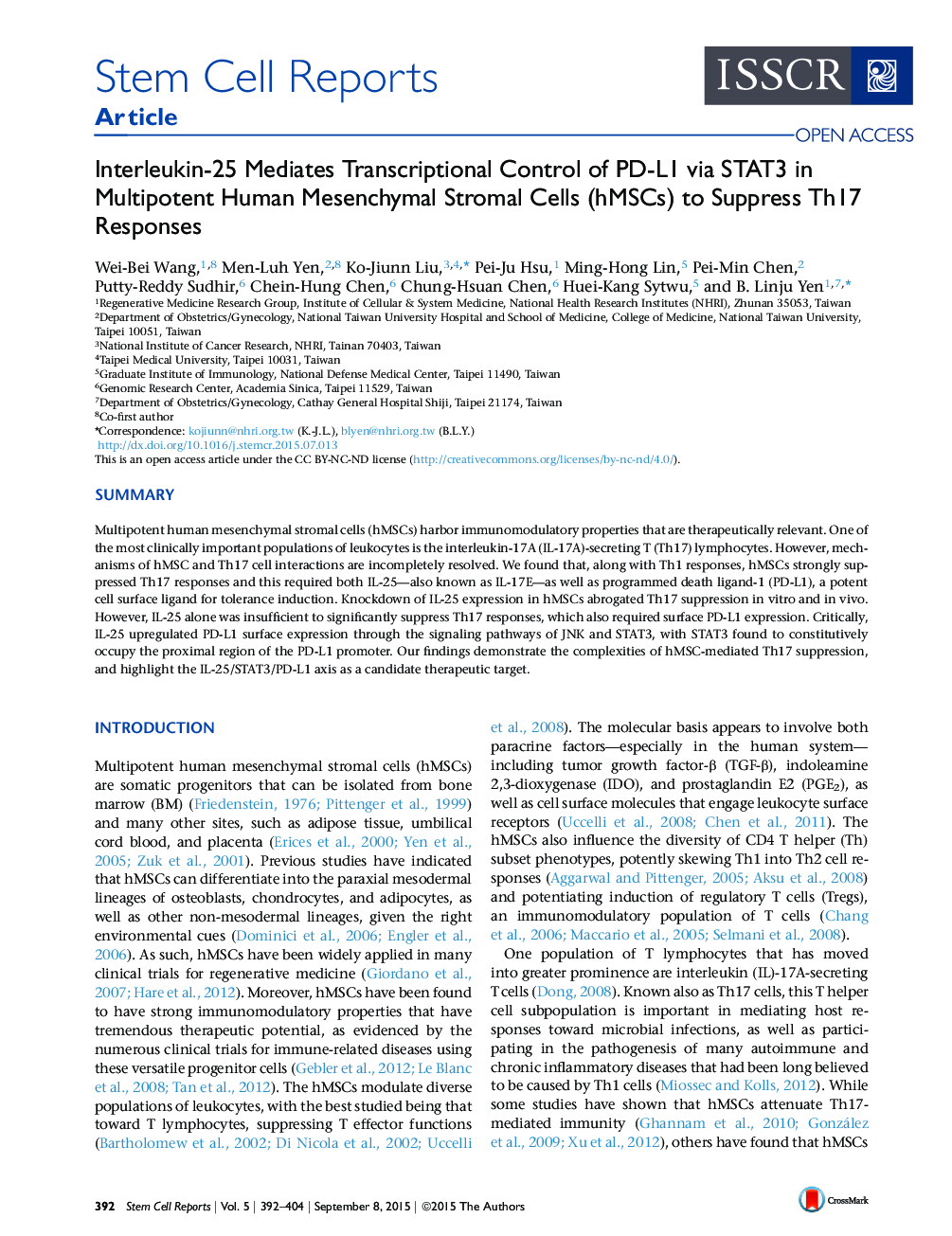| Article ID | Journal | Published Year | Pages | File Type |
|---|---|---|---|---|
| 2093407 | Stem Cell Reports | 2015 | 13 Pages |
•hMSC-secreted IL-25 suppress Th17 responses in vitro and in vivo•IL-25 alone is insufficient to significantly suppress Th17 responses•IL-25 upregulates PD-L1 expression in hMSCs to suppress Th17 cells•IL-25-mediated PD-L1 expression can be driven by STAT3
SummaryMultipotent human mesenchymal stromal cells (hMSCs) harbor immunomodulatory properties that are therapeutically relevant. One of the most clinically important populations of leukocytes is the interleukin-17A (IL-17A)-secreting T (Th17) lymphocytes. However, mechanisms of hMSC and Th17 cell interactions are incompletely resolved. We found that, along with Th1 responses, hMSCs strongly suppressed Th17 responses and this required both IL-25—also known as IL-17E—as well as programmed death ligand-1 (PD-L1), a potent cell surface ligand for tolerance induction. Knockdown of IL-25 expression in hMSCs abrogated Th17 suppression in vitro and in vivo. However, IL-25 alone was insufficient to significantly suppress Th17 responses, which also required surface PD-L1 expression. Critically, IL-25 upregulated PD-L1 surface expression through the signaling pathways of JNK and STAT3, with STAT3 found to constitutively occupy the proximal region of the PD-L1 promoter. Our findings demonstrate the complexities of hMSC-mediated Th17 suppression, and highlight the IL-25/STAT3/PD-L1 axis as a candidate therapeutic target.
Graphical AbstractFigure optionsDownload full-size imageDownload as PowerPoint slide
